Although it may seem a lesser species, the properties of acacia wood place it alongside much more valued species such as the paltin and nuc. Its small use in interior furnishings has made it less known and hence its treatment as an inferior species. However, acacia is one of the most resistant species to damp and decay, being rated just below theemnul de tec. Although it is known more as a structural timber for strength structures, acacia has a distinctive texture and colour and is often used for garden furniture, decking and flooring. Find out more about acacia and its strong, tough and resilient wood below.

photo source: blacklocustlumber.com
Memories of acacia wood
The first time I worked with acacia wood was before the revolution, when I was at ICPIL (Institute for Research and Design in the Wood Industry). Acacia was nothing new to me, because my grandmother had acacia trees in the country, near the fence, for which she often got into conflict with the neighbours. They would want to cut them down because they made shade and slowed down the crops, my grandmother didn't want to because it was good wood for structural strength and she kept them for eventual construction. Besides this idea that they could be used in construction, I also had in mind their smell when they bloomed, the spikes ,airy and sharp and so on.
At the institute, however, I discovered it from a different point of view. The theme I was working on was supposed to bring new species into furniture production. Acacia was one of them. That's how I got to see what acacia solids and veneers look like, and I was impressed by how many colours you can find in a single wood. On the same piece you could find shades of greenish yellow, green, brown and even purple. It was a real delight to look at.
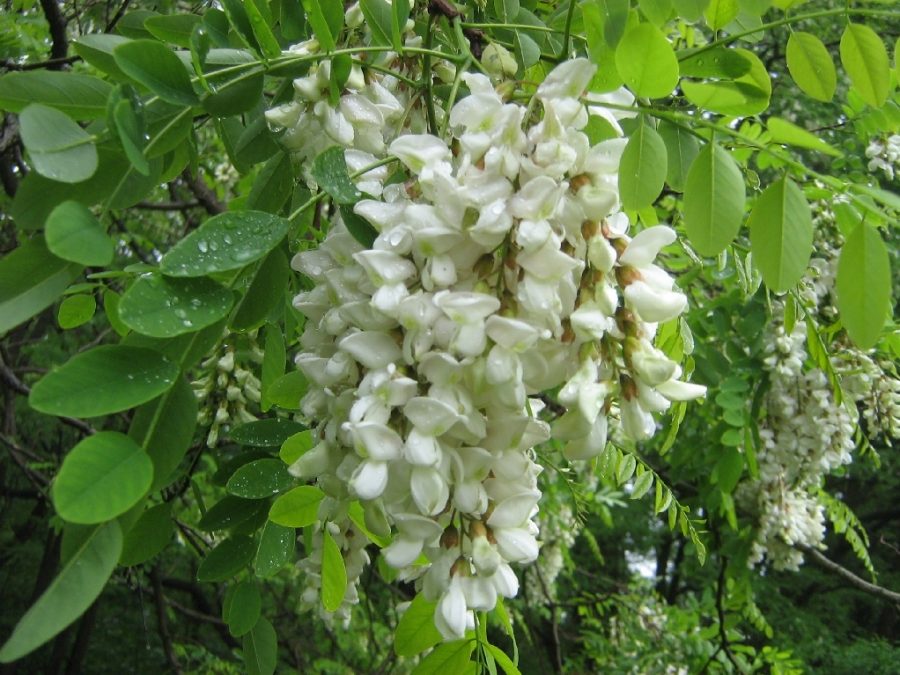
photo source: commons.wikimedia.org
A hardy, fast-growing tree
Acacia (Robinia pseudoacacia) is native to North America. In the 17th century it was brought to Europe, and 200 years later the first acacia trees were grown in Oltenia. Nowadays it is mostly found in the highlands, in sandy areas. It grows faster than other species and resists well to drought, and is often considered invasive. You find it as black locust in the literature in English and acacia in French, Italian and Spanish. You also sometimes find robinio (Italian) or robinier (French). In German it is akazie, robinie or akazieholz (acacia wood).
The roots of the acacia spread very far horizontally, reaching long distances. The trunk grows straight with a narrow crown and can reach heights of 20-30 m and trunk diameters of between 0.6 and 1.2 m. The bark is black with varying iridescence and has deep cracks along the trunk that criss-cross with the appearance of diamond shapes. The branches are laid in a zigzag pattern and are covered in youth with a silvery white down that disappears over time. Young trees have spines that become fewer and fewer as the tree matures. The leaves are dark bluish-green and are clustered 9 to 19, alternately, on the branch. The flowers appear in early May, are usually creamy-white, arranged in 10-20 cm clusters and have a strong, very pleasant fragrance. The fruit is a smooth pod 5-10 cm long and 1-1.5 wide.
Acacia grows fast and is very resistant to adverse conditions. In the past it was often planted on the boundary between plots, useful in winter as a windbreak, but also to fix the soil and prevent desertification. The acacia lives for around 100 years, but single species in parks and gardens can live for up to 200 years.
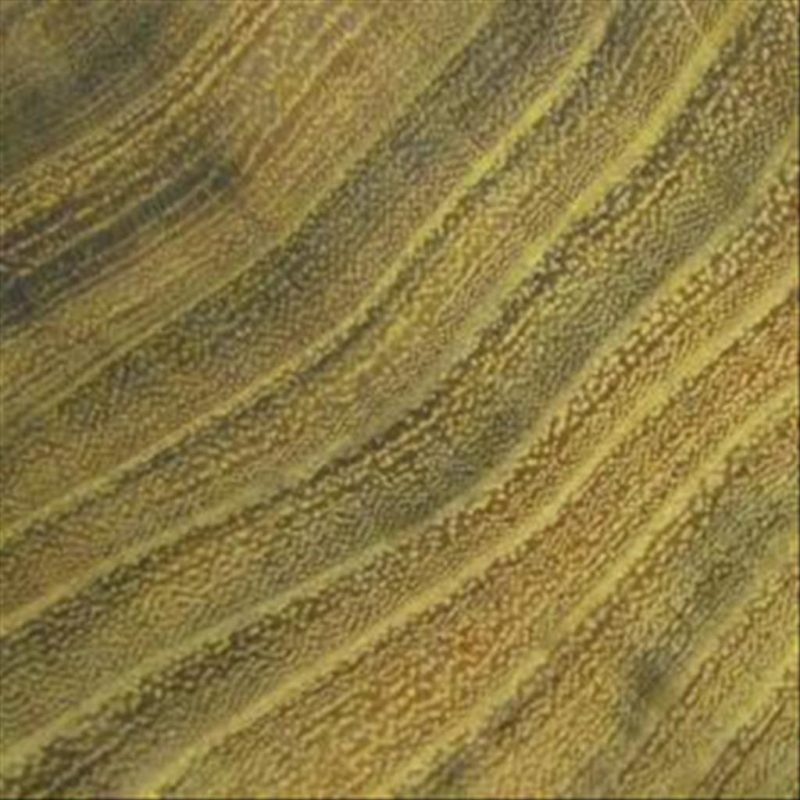
photo source: turningblanks.net
Acacia wood - characteristics and properties
In cross-section through the trunk the delimitation between sapwood and heartwood is very visible. The colour of the sapwood is yellowish-white and that of the heartwood can vary from pale yellow-green to dark brown. The darker the colour, the more mature the tree. Annual rings are clearly visible.
The fibre is generally straight and the texture medium. to coarse. Pores are round, larger and arranged in groups of 2-3 in early wood and smaller and arranged in clusters or strips in late wood. The pores contain abundant tiles. Medullary rays are narrow to medium, normally spaced, the wood has no mirrors. In tangential section it closely resembles oak, but with different colours.
Acacia wood is strong and flexible with a dense structure. The density (in anhydrous state) is 770 kg/m³ and the Janka hardness 7560 N. The presence of tiles in the pots in large numbers makes drying very slow, but has a decisive influence on the resistance of acacia to moisture and rot. Acacia is very resistant to the outside, being positioned just below teak (resistance class 1-2). The high density and hardness makes processing more difficult, sometimes breaking tools. It turns well and can be steam shaped. Glues smoothly.
It has a high content of water-soluble dyes and tannins which can lead to problems with finishing, especially if the products are water soluble. Water removes dyes and tannins and changes the colour of stains and paints. Because of low absorption it can sometimes give adhesion problems.
Acacia has a very high calorific value, comparable to that of anthracite. It burns with a low flame, slowly, just like coal. It also burns and gives off heat if it is green (unburnt).
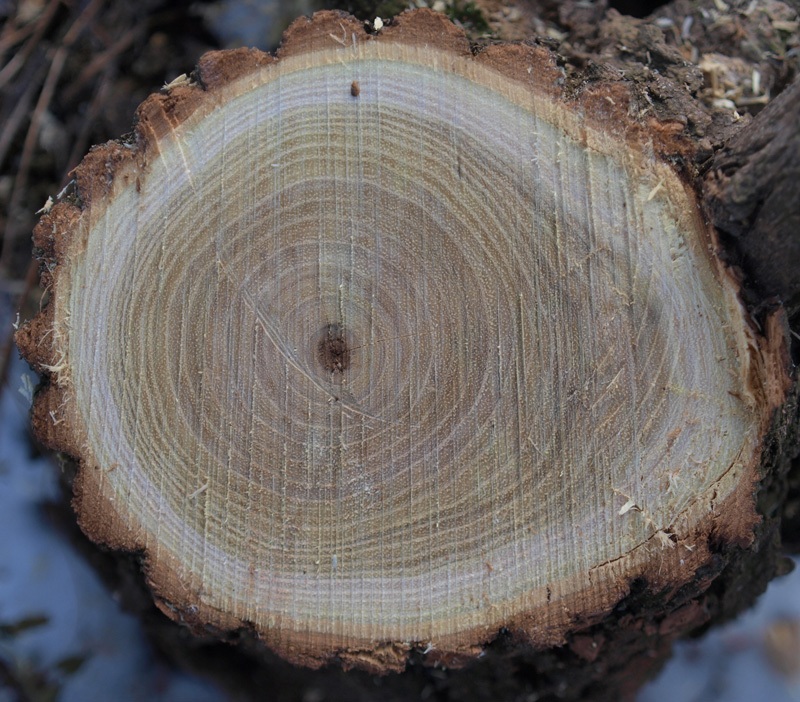
photo source: fld.czu.cz
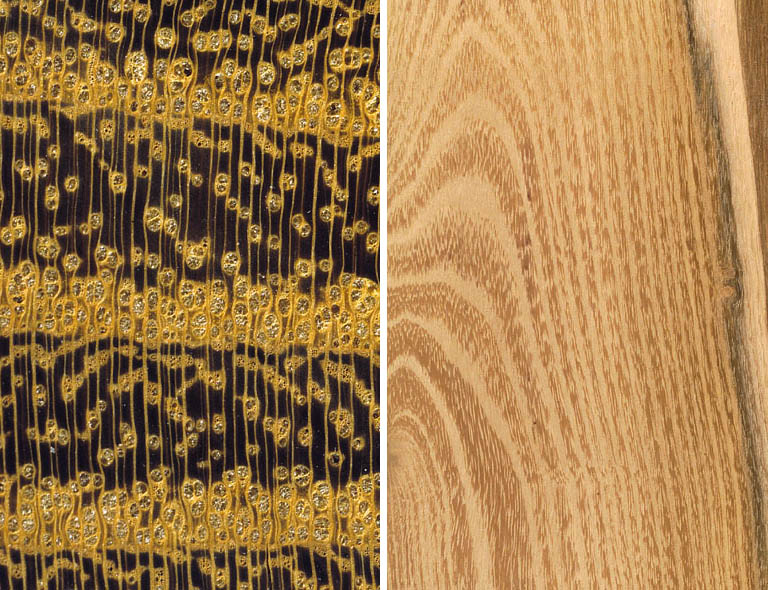
A wood with multiple uses
Its hardness, high density, strength and elasticity make acacia a very good building material. It can be used in load-bearing structures and immediately after felling, as it dries slowly and has no repercussions on the strength of the construction. Good resistance to moisture and rot makes acacia a suitable material for outdoor landscaping, decking, fencing, flooring. Also very good rot resistance makes it suitable for tutors (ploughs) used on fruit trees and vines.
It is one of the preferred species for garden furniture. Finishing is mainly done with oils outdoor resistant. The use of varnishes is not a good choice because of the reduced absorption leading to reduced adhesion.
It is rarely used in the manufacture of interior furniture and only by passionate craftsmen, not in the mass production industry. It is mainly used as a solid, as veneer cutting is very difficult. There are data that say the yield in veneer is 10%. For machining it needs very sharp tools and very careful finishing.
Acacia is also used to make barrels. However, great care must be taken with the liquors put inside, as they release a lot of tannin at first. A drink left inside for a long time risks turning purple or dark green.
With a very high calorific value, acacia is a very good firewood. However, it is not recommended for open fireplaces because it cracks during burning and throws burning embers far away.
In addition to timber uses, acacia is important for stabilising soils and for fast afforestation. Acacia flowers are also an important source of nectar for bees, and acacia honey is highly valued. Acacia flowers are also used to make a syrup with multiple health benefits. It is used to soothe coughs and sore throats and has anti-inflammatory, antimicrobial and cough suppressant properties. Acacia flowers are also used in the kitchen to prepare pancakes and various cakes and to make acacia jam.

photo source: sectlandscaping.com
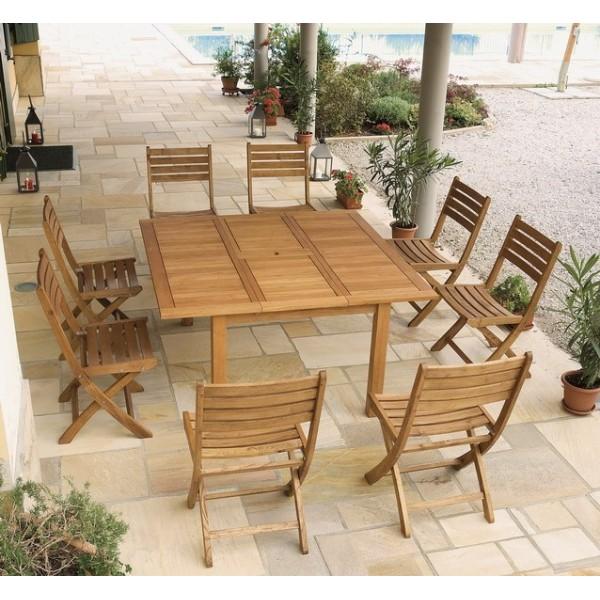
photo source: rimini.subito-italia.eu
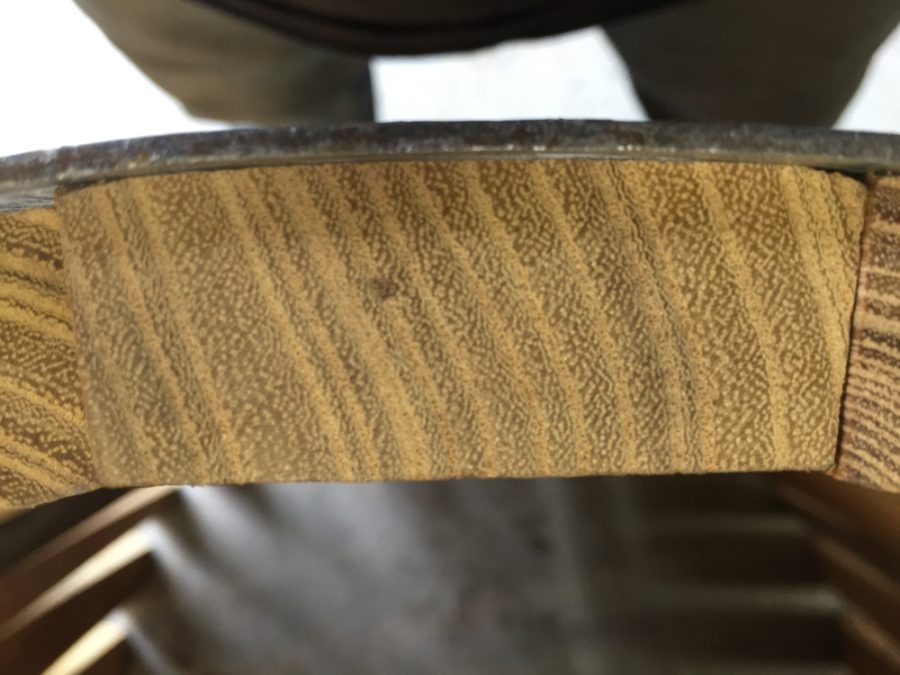
photo source: ecwbny.com
I hope you find the above information useful. As usual, additions are welcome. And if you have any questions or queries, please leave them in the space below. I'm sure I'll reply.




























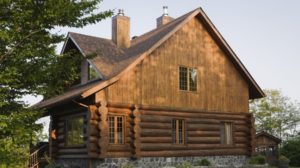

Mrs. Mihaela Radu, I have a question: in the book of Exodus (the Bible) in chap. 26, verses 15 and 16, it says about some acacia planks from which the Tabernacle was made. The dimensions of the planks are given as 10 cubits (5 m) - length and 1.5 cubits (0.75 m) - width... and I am thinking how big that species of acacia (sitim - Ebr.) could have been. Any ideas? I am an architect and need this information for a study. Thank you in advance.
Hello. As far as I know, the salcam is a species that originated in America, so the one mentioned in the Bible should be another species, not Robinia pseudoacacia. However, if it were a salcam, it would not be difficult to obtain such planks because the salcam can reach over 50 m tall, with a diameter of more than 1.5 m, and its trunk is straight. An exact calculation could be made by a wood engineer. I am only a chemical engineer passionate about wood and wood finishing and I do not want to give you wrong information. 🙂
All the best.
Probably the wood mentioned in the Bible is Acacia alba (Faidherbia alba), being del mar widespread in the Sinai peninsula. An interesting article in this regard https://rabbielimallon.wordpress.com/2013/02/10/2-10-13-acacia-wood-1-pshat/
Thank you very much for the article, I love the Salcam is the tree of my heart and I love it very much, the wood what to talk about, I work with it and it gives me Joy :).For five years, in my daily life, I make pancakes from flowers plants and seeds, for bath, it's my passion and activity and I always wondered about making pancakes for bath from tree bark, but information or studies about the properties of tree bark are not too much found, do you have knowledge or access to information about this? Thank you.
I managed to make a gazebo out of acacia wood, I want to tell you that I "dismantled" a hayloft/porumbar that was built since 1949 outside in the yard, covered with broken tiles. The poles of thickness between 120mm 140mm I used for the bottom structure of the gazebo and not only.
What I want to tell you is that those poles were buried in the ground 600mm respectively 60 cm, I took them out whole with difficulty, I cleaned the parts that were in the ground and I was surprised to find that they still had about 6cm of good wood.I insisted on cleaning and peeling the salcam, and after peeling in some parts that had been exposed to moisture for decades I discovered something extraordinary, it was eaten by decay, namely some white worms that left traces / grooves throughout their thickness.
I didn't give up and carefully cleaned every single particle of that wood, I really want to send you (or post here but I don't know how) some pictures of unique pieces of acacia, you have to see the pictures to realize what I'm talking about.
I want to mention that all the joints have been cherted, pre-drilled with 3mm metal burs and then with exigency, patience and accuracy we have hammered nails through those holes.
I'd be glad if you'd like me to send you pictures to see the approximately 67 year old wood I've managed to extend its life.
Please do send them. You can do it on my email address, mihaela.radu@cesbrands.ro, or post on the magazine's Facebook page (Wood Magazine). You can't imagine how much I enjoy the enthusiasm that radiates from your text and the fact that I can discuss with people who have the same passion as me. Thank you and I will contact you after I receive the photos to share my impressions.
Thank you very much, I will send you the promised pictures today!
Thanks for the photos. You've done some work, but it looks great. Congratulations! I too am waiting for you to finish it and send me photos. I'd love, when it's done, to do an article on the transition of the salcam from the old "life" of a dovecote to the new, gazebo life. Do you also have photos of the dovecote (I really like that term. My grandmother was from near Urziceni and she used to say so. I haven't heard it for a long time)? I think it would make a great article. 🙂
Good luck for the future!
All the best.
I also have pictures of the old porumbar, they used to keep there wood, corn, cane (because in the garden there is a huge "nest" of cane planted intentionally to use the leaves for wine barrels), under this sopron/storage/porumbar there is also a bread oven, which I will restore and move it to the new location.
About the gazebo, I hope to finish it as soon as possible (at least the covering that will be once with the scandura given with linseed oil and over bituminous shingles).
I have been looking to make the covering out of cane, papura or dranita (shingles) but finding two sources I came to the conclusion that the price for cane of 50E/sqm is too much.
I'm still deciding how to make the shingles, it would look nice and rustic with shingles but I need time to make the thousands of pieces that need to cover about 25sqm (the area of the patio).
Anyway I'll keep you updated, thank you very much for the article proposal, I'd be delighted to describe what I like to do.
Have a nice day!
-p.s. -I'm going to make a smoker from an old 400L oak barrel that is no longer functional, the project with everything needed is on paper, I just need a little time, but I'll keep you posted.
Now I noticed that I wrote oak barrel...it's a barrel made of salcam wood, it's 50 years old at least.I have several barrels of this kind but the disused one I'm going to transform it, it's already been well cleaned with a wire brush, oil in two hands, then the rosewood lard, it came out very dark, the inside is burnt (from the origin), I'm ready to make another lid and everything I need for the smoker, you'll see !
I'm not saying anything else, I'm just impatient!
I'm caught up in your enthusiasm and can't wait for you to complete the gazebo so I can write about it. I'm suscribing and waiting to hear about the smokers. All the best!
Sarumana, thank you!
Sarumana, this Sunday, June 4, we finished the gazebo.
I am sending you pictures, I have written down all the details, exactly how I did it including how many screws, shingle nails, etc went in, prices and everything!
Can't wait to hear from you!
Interesting article, we know that acacia wood is very hard and would hold up well outside, interesting would be to find out how it behaves over time when standing outside under the action of the weather factors. Does it warp, does it twist, how dimensionally stable is it, does it crack? I'm interested in this because I'd like to "pave" my backyard walkways with acacia cabinetry and I've heard opinions against using acacia in such work on the grounds that it would twist/twist. Thanks
Indeed, it can warp and crack. When the humidity outside is very low (winter in very cold periods, when the moisture in the air freezes and falls to the ground - chickweed), the moisture in the wood tends to come out. Because it is very hard, tensions are high and then cracks are high, or warping occurs. It depends on how you want to pave your yard. If you lay long cabinets, then the probability of cracking is higher. If you use thinner and shorter pieces of wood, then you get rid of the warping problem and the cracks will be small (if any).
All the best.
Thanks for the reply, the pieces will be somewhere around 1.3 m long, so not very long. I understand from you that it would be better to go plank and not cabinet. As a treatment did you recommend anything specific?
Thank you,
All the best
I think the best solution for salami used directly on the ground is oil finishing. Linseed oil is one option. It should be applied in several coats so that the wood absorbs as much as possible. That way it will be better protected against moisture. Good luck!
Okay, thanks for the advice. They won't come directly on the ground, the walkways are cement, and the planks will come mechanically fastened (stainless steel screw+diblu) to them. Between the planks and cement I want to put some plastic spacers of 2-3 mm. And between the planks I would like to leave a 2-3 mm gap.
regarding the behaviour of the decking: for many years I have been promoting this Romanian product
we have done all types of cladding: decking, decking on plastic bases (PE). siding
we found the following:
dry wood:
-long planks 1500-2000 mm long are curved 10-20 mm, "yatagan" effect
percentage cam 20%
-if the screws are cheap and corrode in 4 years break them
-20x60x800 mm sheets clamped on 400×400 mm plastic bases curves about 5%
20x60x400 none curved
so: if you like long boards (and it is normal to like them) don't save on screws
mounted with decking nails that do not rust
green wood: it moves all over the place, if you don't want it to crack, seal the ends with wax or paint
don't get discouraged: order a few more boards and replace what bends
it's well worth it
mounting on the ground: in the technical manual it says that it lasts 45 years in contact with the ground
I burn the underside with a gas lamp;
who knows maybe they live 100 years 🙂
As much as I love salcam (because of the colour and texture, which I think is quite spectacular when polished - I don't know why anyone would put anything but a little oil on salcam), it's not the hardest of the local woods. It's perhaps the hardest native wood that's available in larger quantities, and that lends itself to bigger things, like furniture, gazebos or patio flooring. A much harder wood (if dried properly) is hornwood. That unfortunately is extremely hard to find, and is usually used for small things - typically hammer or axe handles.
Good evening,
All well and good, but where could I find small quantities of salcam scales in Bucharest?
I could even use some scraps from flooring/flooring or similar, at least some knife handles to make.
Thank you
Interesting article, thank you. Thanks also to those who leave comments with more tips and ideas. I wish you all good health.
Very interesting all the articles published ! You "see" the love for wood turned discussions ! Congratulations ! Although I'm not a woodworker either, every time I get home I like to chew something because I like it ! There's something special about wood... you can't compare it to anything else ! Wood has a special nobility, closer to the human soul, regardless of species, regardless of age.
And one more thing! I don't think there is such a thing as "bad wood"! There are only people with ideas and a love for beautiful and lasting things!
Once again, esteem and consideration!
Thanks for your appreciation.
Congratulations and thanks for this article Ms Mihaela, article that highlights the value of acacia wood. In addition to the valuable things you mentioned, if I may, I just want to mention two more points:
- successfully exploits poorly productive land;
- is the most honey-bearing tree in Romania
Thank you, both for your appreciation and for the additions.
All the best!
Well-dried acacia wood is also used to make the pipes, as acacia wood provides one of the most pleasant musical timbres.
Good evening!
Thanks for the information. I didn't know.
All the best!
Can acacia wood be used for windows and doors?
How does it behave when it is combined and layered?
Hello!
Acacia is a heavy wood and a door made of acacia would be very heavy. It can be used, but with care. When it is laminated it is very stable and there are no problems with variations in humidity. Laminated salcam wood is used to make double glazed windows.
Laminated acacia wood flooring is one of the safest flooring choices.
Although it is a very hard and tannin-rich wood, salami does not have big problems with tension in the grain, twisting or other deformations. Problems occur during processing (it is hard and can "chip" tools) and finishing (tannins change colours and reduce varnish adhesion).
All the best!
Don't forget to subscribe to the printed Wood Magazine! For only 58 lei/year you can find out news in the field, discover craft ideas or trade secrets. We remind you that the content in the printed magazine is different from the one on the website. Details in the link below.
Thank you!
https://revistadinlemn.ro/product/abonament-revista-din-lemn/
Hello, I know it is not about this application, the subject. But I want to purchase books about wood and its processing, can you help me. Thank you in advance
I've been trying for 4 days to find continuous-plank acacia wood panels for kitchen furniture. No chance.
It seems that as popular as it is, it is rare to find it processed - the joke...
In Germany it is used more often, in our country...pal domle pal, there is no demand for local wood.
Can Acacia be used to make a door?
Yes, you can. Internal or external door. Acacia wood is very resistant to the outside (humidity, insects, mold).